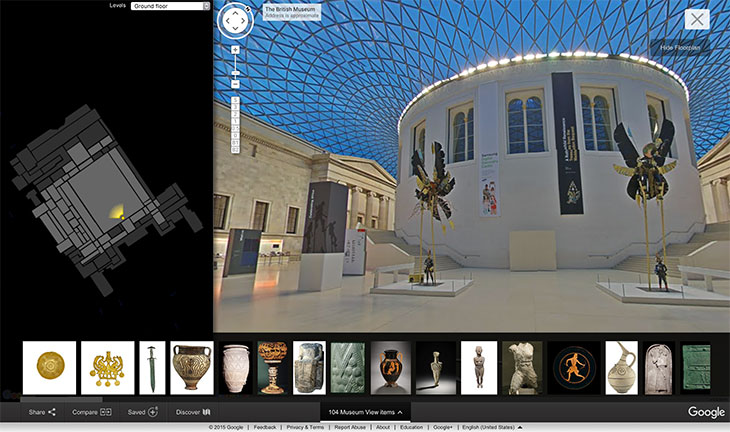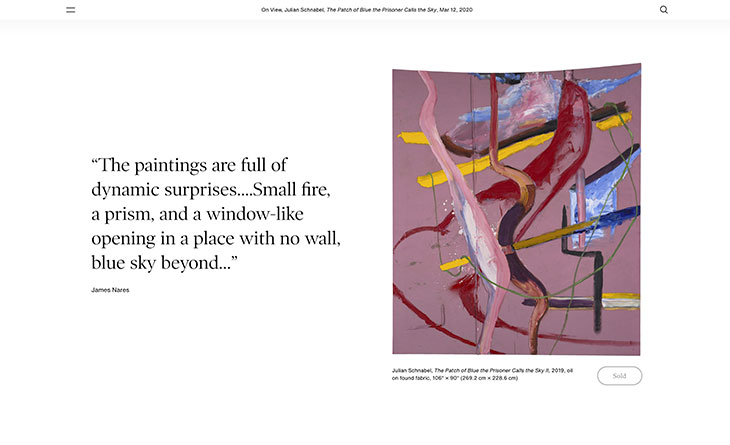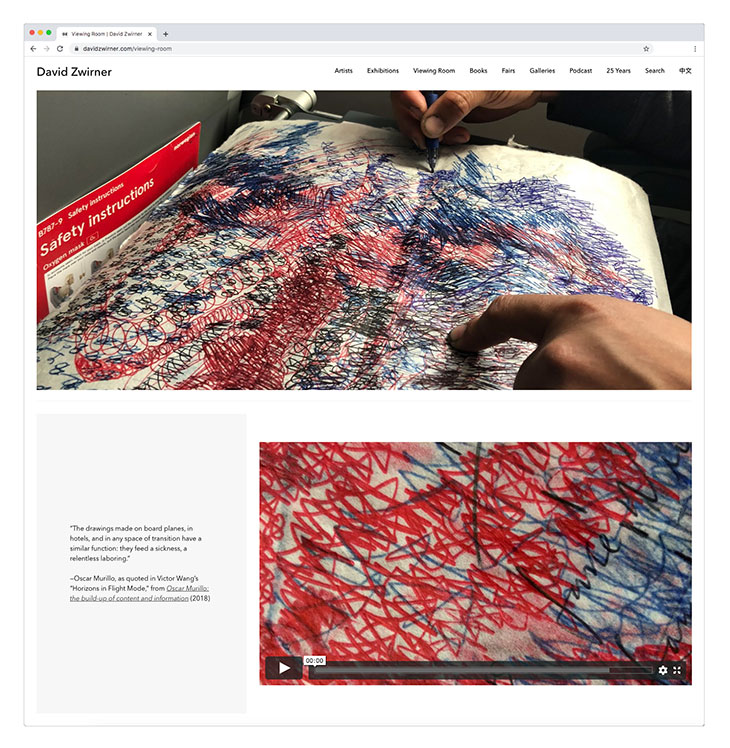Before Covid-19 many museums and galleries had begun to integrate digital platforms, but many more have seen that evolution accelerated by the global health crisis. Following the widespread closure of arts institutions, and with millions of people stuck indoors, the demand for virtual visits has ballooned. Take the Courtauld Gallery, which launched a virtual tour together with the Toronto-based imaging organisation Synthescape in 2009 and closed in September 2018 for refurbishment. Last year that tour was visited just under 9,000 times; during the lockdown, there were 14,600 visits in March alone. Two questions now arise: what does it take to create a digital programme? And will that programme still be of use when the lockdowns end?
One institution able to rely on pre-existing digital infrastructure is the British Museum. In 2015 it collaborated with Google Arts & Culture – the decade-old platform that today features material from some 2,000 museums and archives – to create a virtual tour of its galleries. A team from Google Street View pitched up out of hours and, over the course of about five days, walked a camera trolley through the building – crucially, with its face-blurring technology turned off. Last November the museum added virtual galleries to its own website: thematic selections of works, presented as photographs alongside text from curators, which focus on objects not usually on display.
The Great Court of the British Museum on Google Street View

The difficulty is deciding which pieces best represent its collections. ‘Should we show just the best known and most beautiful or the more eclectic and surprising?’ asks Michael Tame, website and collection online programme manager. ‘It’s about being informative and accessible and authoritative all within a few objects.’ Over the next few weeks the British Museum will also relaunch its complete collection online – a long-term project that comprises four million objects represented through 2.8 million records with 1.8 million images, and whose delivery date has been whisked forward.
You might assume that it’s easier for a commercial gallery to hop online, but there’s still a lot to learn – and Pace Gallery is among those also having to adapt sooner than anticipated. ‘We had been working on a digital rollout following the launch of our new website last September, so we bumped up the deadline,’ says Andria Hickey, senior director and lead curator. Pace has been using online viewing rooms as a private sales tool since September and launched its first series of publicly available online exhibitions last month. A major curatorial challenge: how you encounter works as you scroll down a page. ‘We’re interested in how we can make that experience enriching, inspiring and educational, so we try to focus on the artists’ own words, using quotes or clips from interviews.’
This brings us to one advantage of virtual gallery spaces: they can be crammed with information but appear clutter-free, thanks to a website’s ability to conceal the different layers of a page. ‘In the first layer you see the works, then if you want to learn more you can click to the next level, and the next level, and the next level,’ says Hickey. The artworks are photographed from multiple angles, with plenty of detail shots. ‘Of course, the objects are for sale, but they’re also things you can dig your hands into, maybe get inspired, maybe get distracted.’
View of the online exhibition ‘Julian Schnabel: The Patch of Blue the Prisoner calls the Sky’ (12 March–18 April) at Pace Gallery

The first commercial gallery to take the leap was David Zwirner, which launched an online viewing room platform (a webpage showing images with details of the works for sale) in 2017. It was a natural progression, both in terms of sales – the gallery had been showing and selling works to clients via PDFs and JPGs for years – and keeping up with other industries. ‘We recognised that our global collecting community was transacting online in all aspects of their life and that it was important to meet them where they were spending their time,’ says Elena Soboleva, director of online sales. Since then it has become a core part of the business, hosting historical shows and brand-new work. According to Soboleva, the preparation isn’t all that different from that required by a physical show and involves similar resources. ‘Our research and editorial teams contribute context, including digital-only tools like audio and video,’ she says. ‘Our design and tech teams build out the online presentation, making sure it does the works justice.’
The gallery’s latest project – the result of a brainstorming session that took place two weeks ago – is ‘Platform: New York’, a month-long viewing room that launched on 3 April. It offers a dozen newer galleries that might not have the funds to invest in a first-rate web developer the chance to each present a selection of works by a single artist on David Zwirner Online. ‘Platform: London’ will launch later this month.
View of the online exhibition ‘Oscar Murillo: Poetics of Flight’ (18 June–28 July 2019) at David Zwirner Online. Courtesy David Zwirner

A group exhibition might not have been so swiftly prepared in a physical gallery space, the set-up of which requires more manual labour – something that’s highlighted in the Guggenheim Bilbao’s new digital initiative. In the videos that make up #GuggenheimBilbaoLive, curators and other staff share their thoughts on works and exhibitions, and reveal the hard work that goes on behind the scenes – from conservation efforts to the maintenance of Frank Gehry’s famous building. ‘The installation of an exhibition is in itself a challenge and often something the public doesn’t get to see,’ says director Juan Ignacio Vidarte. Particularly challenging, you’ll learn, was that of The Matter of Time (1994–2005), a monumental series of elliptical works by Richard Serra made up of more than 1,000 tonnes of weathered steel.
What happens when the lockdown is lifted – when we have access to the real and no longer have to make do with the virtual? The demand for digital may dip, but the hope is there will be a better balance. ‘This unprecedented period has the potential for museums, galleries and cultural centres to renew and rethink their digital estates as remarkable spaces in their own right and for the widest possible audiences to enjoy,’ says Barnaby Wright, deputy head of the Courtauld. ‘If this happens, we should be able to hear the sound of thousands of pins dropping into Google Maps as people plan their trips to museums and galleries they’ve discovered online when the world reopens again.’


